Effects and Molecular Regulation Mechanisms of Salinity Stress on the Health and Disease Resistance of Grass Carp
- PMID: 35734166
- PMCID: PMC9207326
- DOI: 10.3389/fimmu.2022.917497
Effects and Molecular Regulation Mechanisms of Salinity Stress on the Health and Disease Resistance of Grass Carp
Abstract
Though some freshwater fish have been successfully cultivated in saline-alkali water, the survival rates of freshwater fish are greatly affected by different saline-alkali conditions. The mechanisms of immune adaptation or immunosuppression of freshwater fish under different saline-alkali stress remain unclear. Here, grass carp were exposed to 3‰ and 6‰ salinity for 30 days. It was observed that salinity treatments had no obvious effects on survival rates, but significantly increased the percent of unhealthy fish. Salinity treatments also increased the susceptibility of grass carp against Flavobacterium columnare infection. The fatality rate (16.67%) of grass carp treated with 6‰ salinity was much lower than that treated with 3‰ salinity (40%). In the absence of infection, higher numbers of immune-related DEGs and signaling pathways were enriched in 6‰ salinity-treated asymptomatic fish than in 3‰ salinity-treated asymptomatic fish. Furthermore different from salinity-treated symptomatic fish, more DEGs involved in the upstream sensors of NOD-like receptor signaling pathway, such as NLRs, were induced in the gills of 6‰ salinity-treated asymptomatic fish. However in the case of F. columnare infection, more immune-related signaling pathways were impaired by salinity treatments. Among them, only NOD-like receptor signaling pathway was significantly enriched at early (1 and/or 2 dpi) and late (7 dpi) time points of infection both for 3‰ salinity-treated and 6‰ salinity-treated fish. Besides the innate immune responses, the adaptive immune responses such as the production of Ig levels were impaired by salinity treatments in the grass carp infected with F. columnare. The present study also characterized two novel NLRs regulated by salinity stress could inhibit bacterial proliferation and improve the survival rate of infected cells. Collectively, the present study provides the insights into the possible mechanisms why the percent of unhealthy fish in the absence of infection and mortality of grass carp in the case of F. columnare infection were much lower in the 6‰ salinity-treated grass carp than in 3‰ salinity-treated grass carp, and also offers a number of potential markers for sensing both environmental salinity stress and pathogen.
Keywords: F. columnare infection; NLRs; NOD-like receptor signaling pathway; grass carp; salinity treatments.
Copyright © 2022 Fang, Yang, Wu, Zheng, Song, Zhang and Chang.
Conflict of interest statement
The authors declare that the research was conducted in the absence of any commercial or financial relationships that could be construed as a potential conflict of interest.
Figures
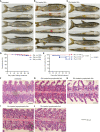


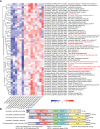
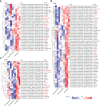
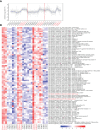


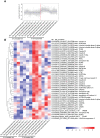

Similar articles
-
Immunoprotective Effects of Two Histone H2A Variants in the Grass Carp Against Flavobacterium columnare Infection.Front Immunol. 2022 Jul 11;13:939464. doi: 10.3389/fimmu.2022.939464. eCollection 2022. Front Immunol. 2022. PMID: 35898515 Free PMC article.
-
Dietary vitamin C deficiency depressed the gill physical barriers and immune barriers referring to Nrf2, apoptosis, MLCK, NF-κB and TOR signaling in grass carp (Ctenopharyngodon idella) under infection of Flavobacterium columnare.Fish Shellfish Immunol. 2016 Nov;58:177-192. doi: 10.1016/j.fsi.2016.09.029. Epub 2016 Sep 15. Fish Shellfish Immunol. 2016. PMID: 27640333
-
Transcriptome analysis of head kidney and liver in grass carp (Ctenopharyngodon idella) symptomatically or asymptomatically infected with Flavobacterium columnare.Fish Shellfish Immunol. 2025 Jun;161:110293. doi: 10.1016/j.fsi.2025.110293. Epub 2025 Mar 22. Fish Shellfish Immunol. 2025. PMID: 40122189
-
Transcriptome analysis of immune-related gene expression in Yellow River carp (Cyprinus carpio var.) after challenge with Flavobacterium columnare.Microb Pathog. 2021 Nov;160:105148. doi: 10.1016/j.micpath.2021.105148. Epub 2021 Aug 23. Microb Pathog. 2021. PMID: 34438023
-
Insights into the antiviral immunity against grass carp (Ctenopharyngodon idella) reovirus (GCRV) in grass carp.J Immunol Res. 2015;2015:670437. doi: 10.1155/2015/670437. Epub 2015 Feb 9. J Immunol Res. 2015. PMID: 25759845 Free PMC article. Review.
Cited by
-
The Effect of Salinity Stress on Enzyme Activities, Histology, and Transcriptome of Silver Carp (Hypophthalmichthys molitrix).Biology (Basel). 2022 Oct 27;11(11):1580. doi: 10.3390/biology11111580. Biology (Basel). 2022. PMID: 36358281 Free PMC article.
-
Effects of Saline-Alkaline Stress on Metabolome, Biochemical Parameters, and Histopathology in the Kidney of Crucian Carp (Carassius auratus).Metabolites. 2023 Jan 20;13(2):159. doi: 10.3390/metabo13020159. Metabolites. 2023. PMID: 36837778 Free PMC article.
-
Transcriptome analysis reveals high concentration of resveratrol promotes lipid synthesis and induces apoptosis in Siberian sturgeon (Acipenser baerii).BMC Genomics. 2024 Aug 31;25(1):821. doi: 10.1186/s12864-024-10698-0. BMC Genomics. 2024. PMID: 39217297 Free PMC article.
-
Diverse Transcriptome Responses to Salinity Change in Atlantic Cod Subpopulations.Cells. 2023 Dec 3;12(23):2760. doi: 10.3390/cells12232760. Cells. 2023. PMID: 38067188 Free PMC article.
-
RNA-Seq Reveals Adaptation Strategy in Grass Carp (Ctenopharyngodon idella) Under Hypersaline Conditions.Int J Mol Sci. 2025 Mar 24;26(7):2930. doi: 10.3390/ijms26072930. Int J Mol Sci. 2025. PMID: 40243538 Free PMC article.
References
-
- Wang H, Lai QF, Me ZL. Water Quality for Aquaculture in Saline-Alkaline Land. Aquatic Industry Standard of the People's Republic of China. (2012) pp. 1–6, SC/T9406.
-
- Xu W. Tolerance of 5 Species of Fish and Changes of Immune Related Indicators Under Salinity and Immunological Stress Reaction. Shanghai: Shanghai Ocean University; (2014).
-
- Xu W, Geng LW, Jiang HF, Tong GX. A Review of Development and Utilization of Fish Culture in Saline-Alkaline Water. Chin J Fish (2015) 28:44–7.
Publication types
MeSH terms
Substances
LinkOut - more resources
Full Text Sources
Research Materials

